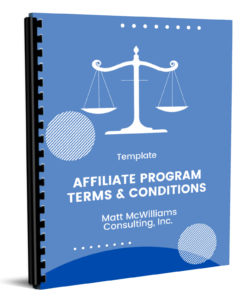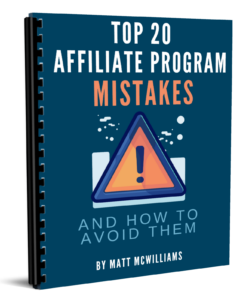Deciding whether to approve or decline an affiliate can be a tricky process. How do you distinguish between good and bad affiliates? Should you always accept or decline, or is there a middle ground? In today’s episode, I’ll walk you through our exact process for evaluating affiliate applications. Listen up to learn how we make these important decisions.
Click Here for The Written Transcript of This Episode
Links Mentioned in this Episode
TEXT ME: 260-217-4619
Don’t Miss An Episode – Subscribe Below
Previous Episodes of The Affiliate Guy
How to Communicate Better with Your Affiliates
Successful Affiliate Onboarding: How to Setup Your Affiliates to Win
How I Grew a Major Affiliate Program from $15M to $325M a Year (In Only 4 Years)
How to Create The Right Affiliate Commissions
Top 14 Reasons Your Affiliate Program is Failing (And How to Fix It)
Should You Approve or Decline an Affiliate? How to Decide
Determining Good Affiliates from Bad Affiliates
When managing an affiliate program, especially on an affiliate network, it’s crucial to identify good affiliates from bad ones. Here’s how we process affiliate applications and decide whether to accept, decline, or hold an affiliate in a pending status.
General Approach
- Avoid Automatic Declines – Instead of outright rejecting applications, take an extra step and reach out to them for more information.
- Encourage Detailed Applications – If you’re an affiliate, submit a thorough application that makes it easy for the manager to approve you.
- Subjective Evaluation – Approval decisions are made using a mix of objective and subjective criteria.
Key Considerations
1. Country of Origin
- Some countries have higher fraud rates. While this is not an automatic disqualifier, it’s a yellow flag that requires further scrutiny.
- Many legitimate affiliates come from countries flagged for fraud, so additional factors must be considered.
2. Domain Name
- Affiliates with a shady or irrelevant domain name raise concerns.
- Example: A domain like “BillClintonSex-Scandalous.blogspot.com” is not a good fit for a nutrition product.
3. Website Quality
- Does their site pass the “smell test”?
- Check if the site is well-maintained, valuable, and aligned with your brand.
- Ensure it’s not just a banner farm or filled with broken links.
4. Alignment with Brand Values
- Determine if their site’s content aligns with your values.
- You have full discretion to avoid affiliations with politically charged, adult content, or any category that doesn’t match your brand ethos.
- On networks, an affiliate may own multiple sites. If they have one that fits, allow promotion only on that site.
5. Time on the Network
- A long-standing presence on an affiliate network generally indicates credibility.
- Anything over a year is considered solid, but new affiliates aren’t automatically declined.
6. Domain Registration Age
- A brand-new domain isn’t necessarily bad, but if it’s paired with other red flags, it warrants concern.
7. Use of Trademarks in URLs
- If an applicant’s website is “Buy-Adidas-Shoes.com,” they might not be adding value and could be violating trademark policies.
8. Declared Promotional Methods
- If they indicate using methods that violate your terms (e.g., adware, trademark bidding, spammy email tactics), that’s a red flag.
- Many affiliates copy-paste generic applications, so review these carefully.
9. Research the Applicant
- Search for the affiliate’s online presence to check for negative feedback or shady promotions.
- Review past promotions and see if they align with ethical marketing practices.
10. Communication Response
- If you reach out for clarification and they don’t respond within a week, it’s usually an easy decline.
Monitoring and Ongoing Review
- New affiliates are closely monitored – Their first 5–10 sales should be manually reviewed.
- Look for anomalies – Unusually high conversion rates, suspicious refund requests, or patterns inconsistent with your typical affiliates.
- Establish ongoing checks – Ensure affiliates maintain compliance and continue delivering value.
Final Thought
Err on the side of approval unless there are multiple yellow or red flags. Especially in industries like finance and insurance, stricter vetting may be necessary. In retail, digital products, and membership-based programs, being more lenient can allow for potential growth.
By following this process, you can build a strong, trustworthy affiliate program while minimizing risks. If in doubt, reach out and communicate with potential affiliates before making a final decision.
Questions?
Text me anytime at (260) 217-4619.
Or…check out some of my free reports to help you get on the right track:
 |
 |
 |
 |
 |
 |
 |
 |
 |
